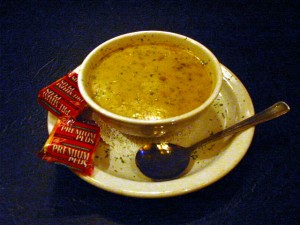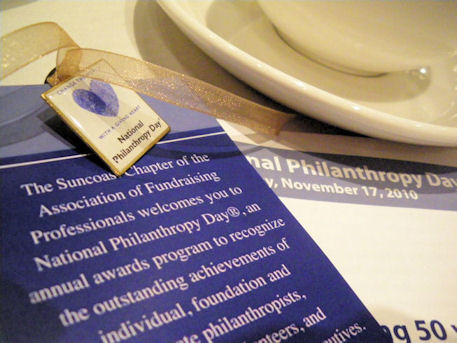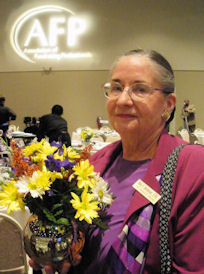 I am on an airplane trolling through the little notebook that I take everywhere and found my notes from Bob Carter’s talk at the APRA Florida conference. I’m realizing just how much of what he told us is showing up in the stories of the people I have been researching lately. I have to wonder if others of you are seeing these up close and personal too.
I am on an airplane trolling through the little notebook that I take everywhere and found my notes from Bob Carter’s talk at the APRA Florida conference. I’m realizing just how much of what he told us is showing up in the stories of the people I have been researching lately. I have to wonder if others of you are seeing these up close and personal too.
Bob Carter of previous Ketchum fame, has his own shop now, Of Philanthropy, and it is a fitting name for what he has to say. He is an engaging speaker with a global outlook. Best of all, he makes good practical sense.
The Best Solution
Carter mentioned that philanthropists are trending towards being married to the solution instead of the institution. I’ve heard this spoken of as a generational trend as well and it’s probably both, but I have written up a few donor profiles recently that demonstrate this emphatically. While the largest gifts go to the charity the donor is closest to and trusts the most to achieve the mission, giving is not guaranteed and is quickly shared with innovating organizations. Are you communicating your effectiveness at implementing the solution?
Direct Involvement
Many speakers, not just Carter, have been talking about donors being more involved for a while now, but it has only been recently that I have seen it firsthand as so intrinsic to some donors’ giving. I heard Carla Harris speak at the AFP Florida Caucus’ Planet Philanthropy conference and she donates the proceeds of all of her gospel albums. Her occupation is Wall Street banker!
And more than usual I have been writing up donor profiles demonstrating this kind of it’s-a-way-of-life giving. I am also seeing more and more donors who don’t just give, they serve in four or five or even more volunteer capacities at the same organization!
Leveraging
Carter told the APRA Florida researchers that for every major gift there is no excuse for not getting three or four more from that donor’s network. Nothing new there, but it gave me a good kick-in-the-butt about priming my clients with possibilities when I send them a profile in preparation for solicitation. Depending on the client and the relationship I can do more than name-drop in my profiles, I can be part of the ongoing conversation and strategy.
Jennifer Kehoe of the University of Central Florida shared a great story at the APRA Florida conference about how her research department was able to add value to a major gift donor’s cultivation *throughout* and without which a gift would have been unlikely. Prospect researchers are fundraisers too – we want the big “YES” just as much as the fundraiser!
Collaborating
How do you get in with the philanthropic in-crowd in your community? Carter suggests a collaboration. The donors want it and I have watched one of my clients use a collaborative project to successfully promote the organization’s commitment and excellence to the in-crowd of philanthropists in her community. Leveraging the collaboration, donor research and excellent cultivation, she has brought her organization’s fundraising from barely there to million dollar gifts.
Provocative Ideas
But maybe the comment I liked most was when Carter talked about an organization that invited its best donors to a fundraising training. I am no longer surprised when board members show up for my Introduction to Prospect Research trainings. When board members and major donors become educated about fundraising it only makes them more effective givers. I have to wonder what other unusual cultivation activities fundraisers have begun using!
What have you been doing and seeing lately?

 I recently had the opportunity to meet up with Suzanne Nixon, State Director of Development for Devereux in Florida. We had such an interesting conversation that I asked her if I could share some of it with Aspire Research Group readers. Wouldn’t you know it, she said yes. Thanks Suzanne!
I recently had the opportunity to meet up with Suzanne Nixon, State Director of Development for Devereux in Florida. We had such an interesting conversation that I asked her if I could share some of it with Aspire Research Group readers. Wouldn’t you know it, she said yes. Thanks Suzanne!


